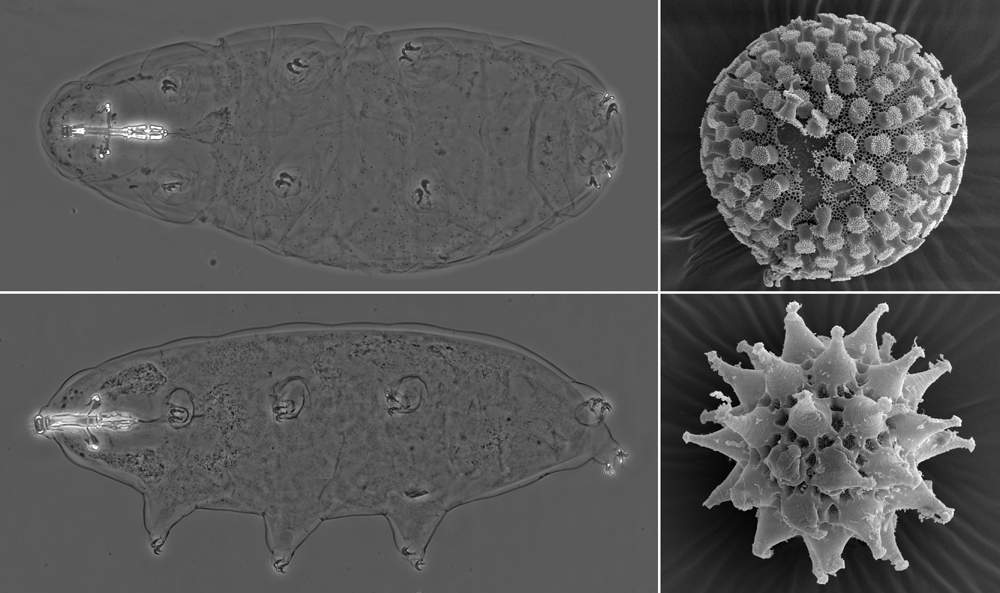The Discovery of Two New
Tardigrade Species from the Family Macrobiotidae
Two new tardigrade species, one representing the
Macrobiotus hufelandi complex and one – the Paramacrobiotus richtersi
complex are described by means of integrative taxonomy. Macrobiotus
crustulus sp. nov. from French Guiana is the most similar to
Macrobiotus martini Bartels, Pilato, Lisi and Nelson, 2009, Macrobiotus
santoroi Pilato and D'Urso, 1976, but differs from them mainly by
having the lissostomus type of the oral cavity armature (teeth not
visible under light microscopy) and well developed, convex terminal
discs of egg processes covered with evident granulation.
Paramacrobiotus filipi sp. nov. from the Malaysian part of Borneo is
the most similar to Paramacrobiotus alekseevi (Tumanov, 2005), but
differs from it primarily by the presence of body granulation visible
under light microscopy and by the presence of sculptured and porous
areoles around egg processes.

Read the full article, published by Zoological
Studies, here
Follow Zoological Studies on
Twitter @ZooStudies
and Facebook
